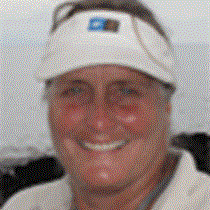Cedro Caño, Arboles Muertos Lake and Supay Lake and Caño
We travelled some 40 miles up the Ucayali River and tied up in the wee hours of the morning. Once again the “knock knock” came on our cabin doors at 0600. But, after a taste of the heat and sun yesterday, no one is complaining about our early wake-up calls! Rather, we are enjoying the “rhythm of the rain forest”—early to rise, mid-day siesta and late afternoon outing after the day has begun to cool off.
Fortified with crackers, bananas, and coffee or tea, we headed out for exploration and wildlife searching on Cedro Caño, a narrow black water creek, via either jungle kayaks or skiffs. The kayakers heard more birds than they could actually identify by themselves, and in addition they spotted a sloth, some saw squirrel monkeys leaping from tree to tree, and even a toucan. They thoroughly enjoyed the peace and intimacy of paddling slowly along a rain forest creek.
In the skiffs with naturalists Reny and Luis we had an exceptional morning! Within an hour’s time we had seen three species of monkeys—dusky titis, monk sakis, and squirrel monkeys—besides many colorful and noisy birds (the most outrageous being the plum-throated cotinga), sloths and a weasel like tyra. We found a bright yellow frog among the floating water lettuce, and admired the epiphytes and bromeliads on the high branches of the forest trees.
Out we went again following breakfast, this time to a lake called Arboles Muertos or Dead Trees Lake. This skiff ride was also very productive and among many other great sightings we saw a large crimson-crested woodpecker, long-nosed bats sleeping in a row on a tree trunk, an elegant white and black swallow-tailed kite, a juvenile golden tegu lizard and our first pygmy marmoset, the smallest monkey in the world. Fish were jumping in the narrow stream and several landed in our boats!
As soon as we had returned to the boat, our Captain had the crew untied our line, and the Delfin II began a 25 mile navigation to our afternoon destination. Captain Remigio told me that the Ucayali River is flowing at about 3 knots against us, and that as we make our way up river, we travel at speeds of between 6 - 8 knots. Before lunch naturalist Luis showed us many of the tropical fruits we have seen and will be eating this week.
After lunch and siesta we gathered in the lounge with naturalist Juan Luis to go over our wildlife lists and mark off the species we have thus far seen. There were already many! Then two skiffs headed up Supay Caño to a wide lake where we leapt (with slight hesitation) into the clear black water for a refreshing swim. The third skiff joined us in the Caño later and we all saw much wildlife. Motoring slowly along we found over two dozen black-crowned night herons, both ringed and Amazon kingfishers, red-capped cardinals, masked crimson tanagers, sloths (one very close to some of us!) and two species of primates: the ubiquitous squirrel monkeys and again, the tiniest of all, the pygmy marmoset. We all got good looks at the strange Amazonian fresh water pink dolphins—some of them were accompanied by young calves—and as we contentedly returned to the ship the sunset was splendid.




